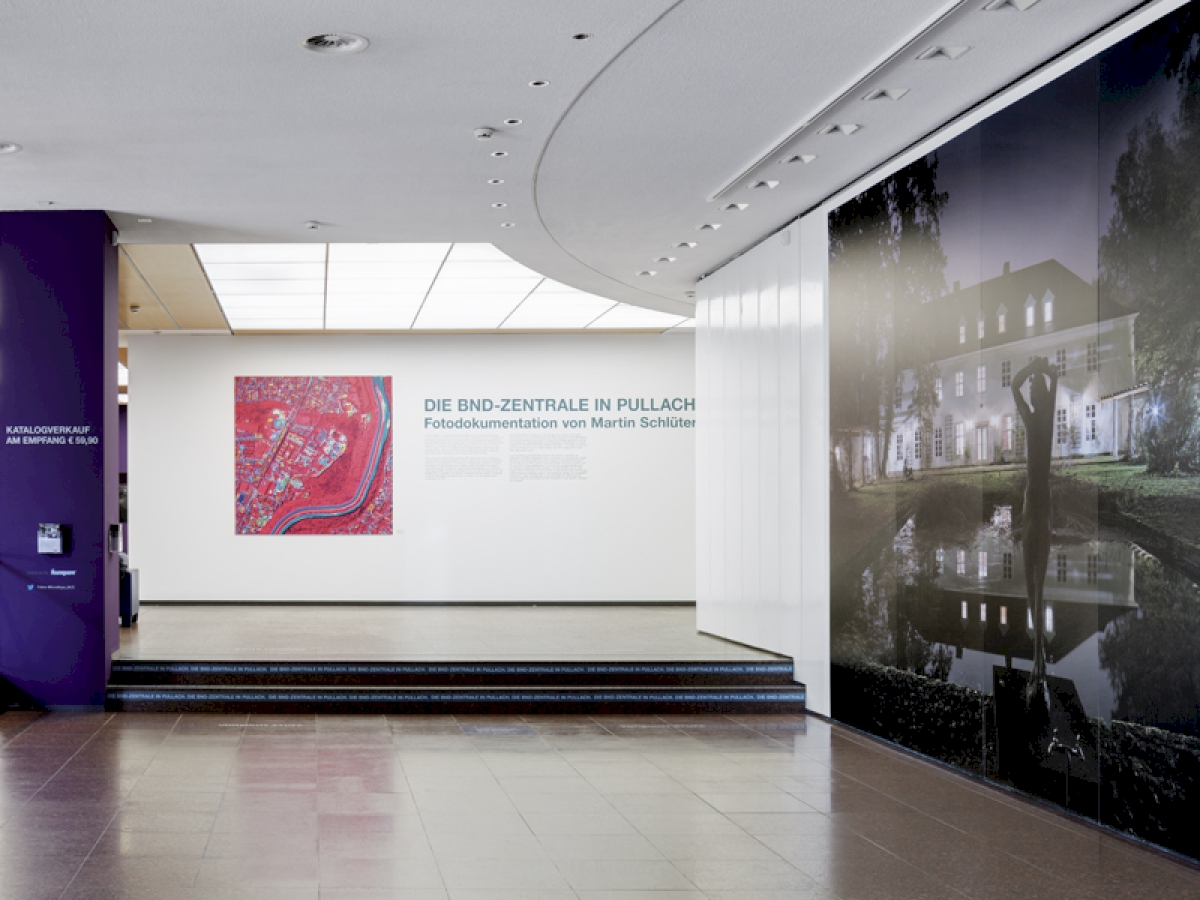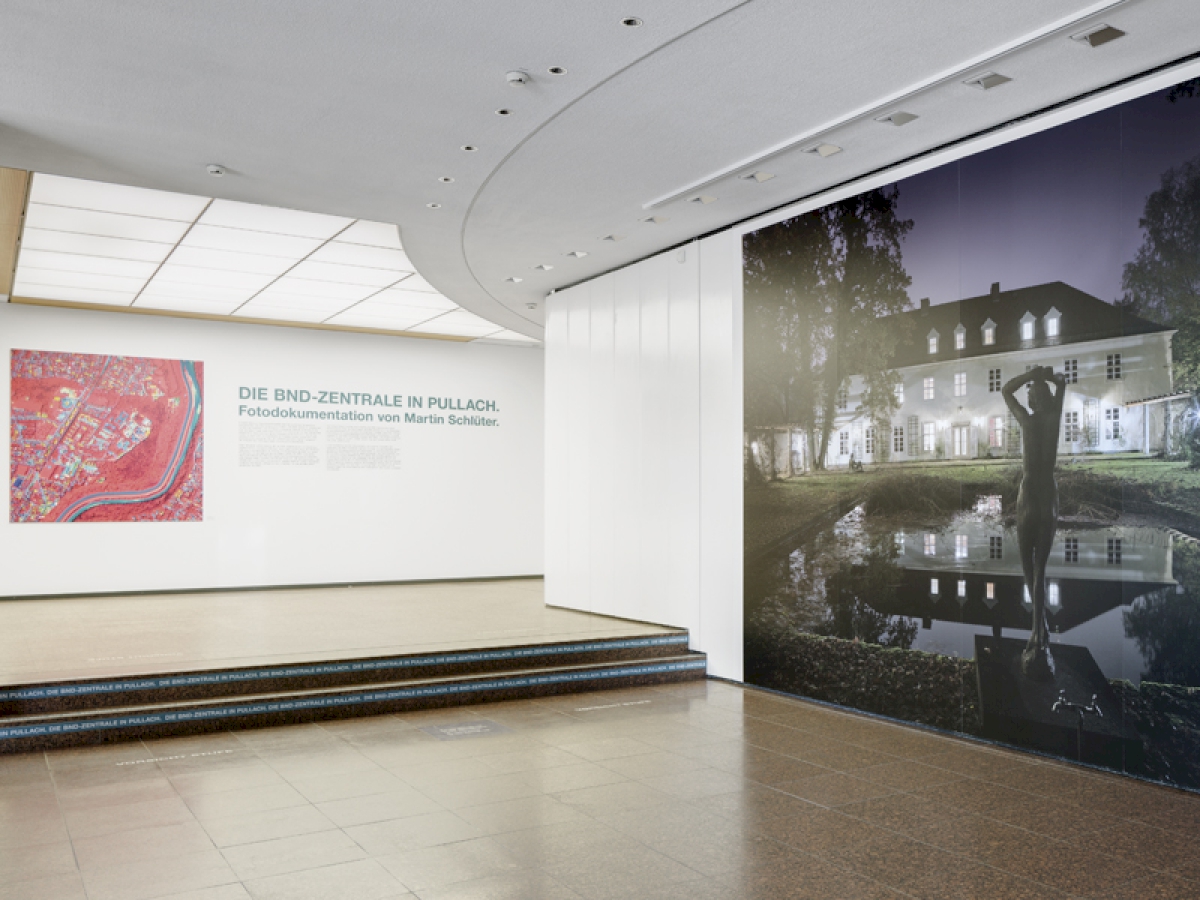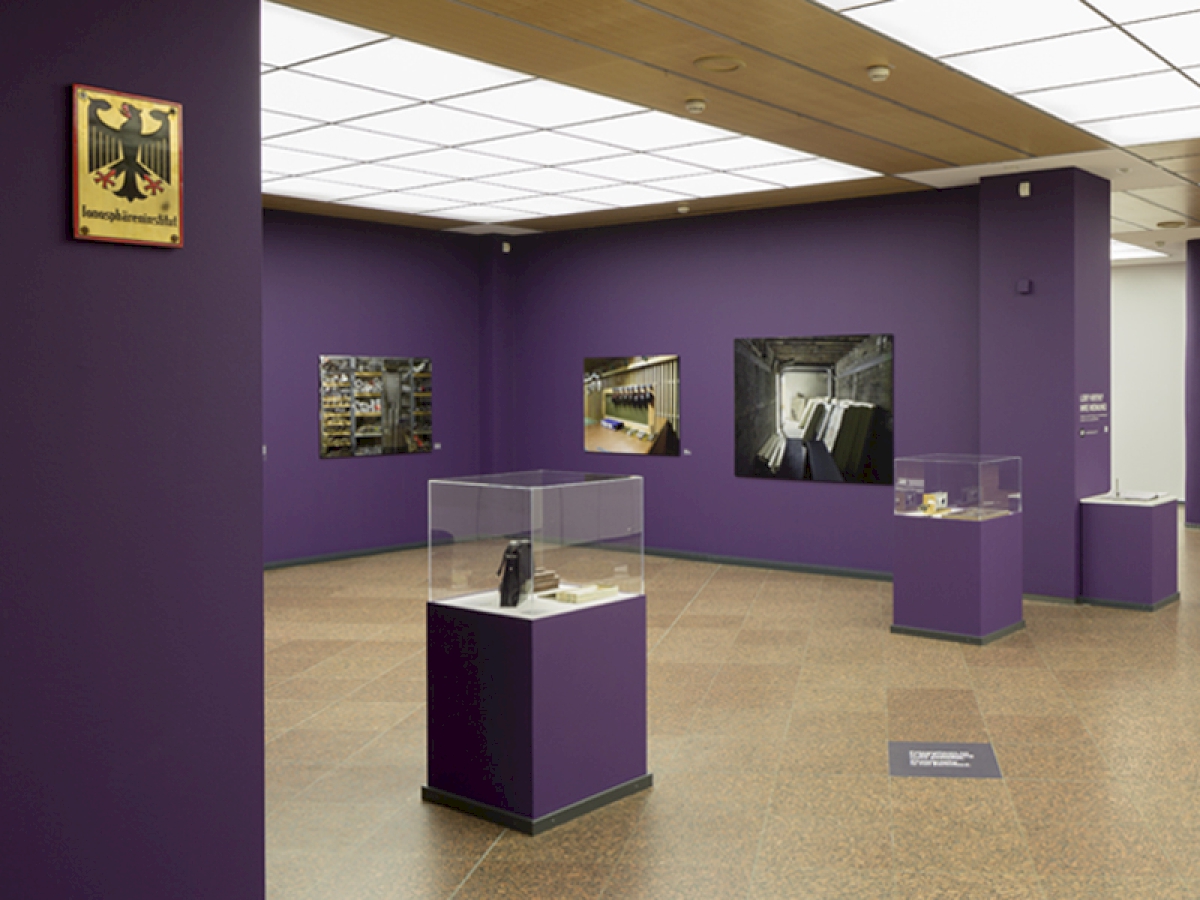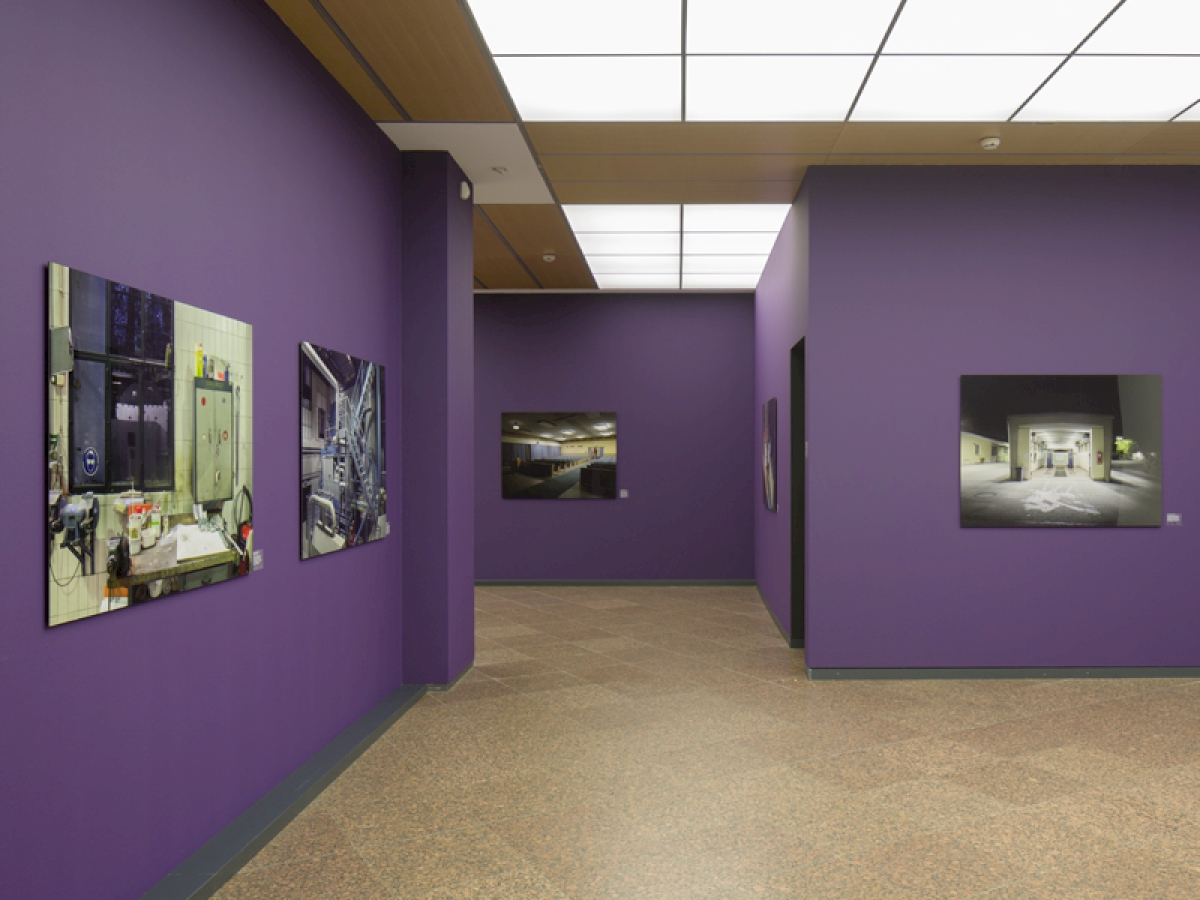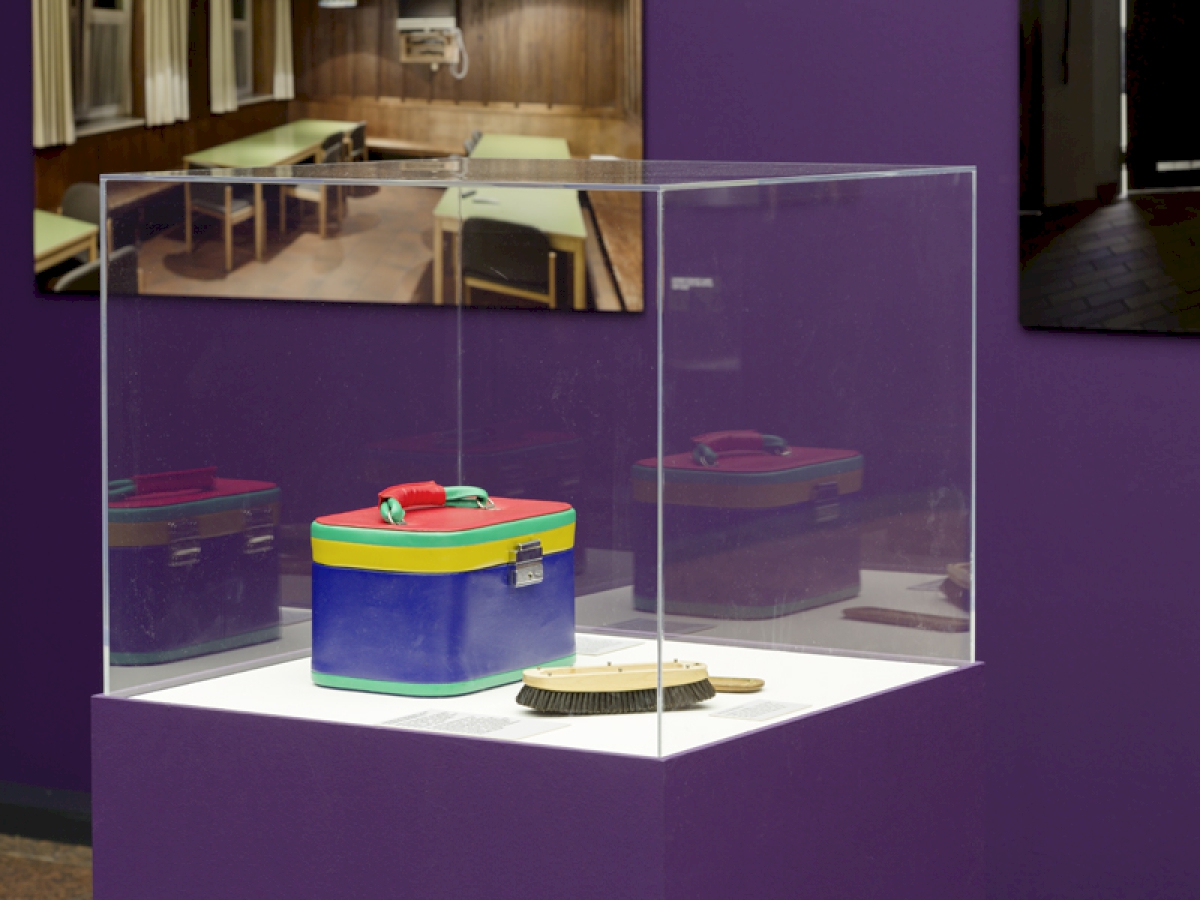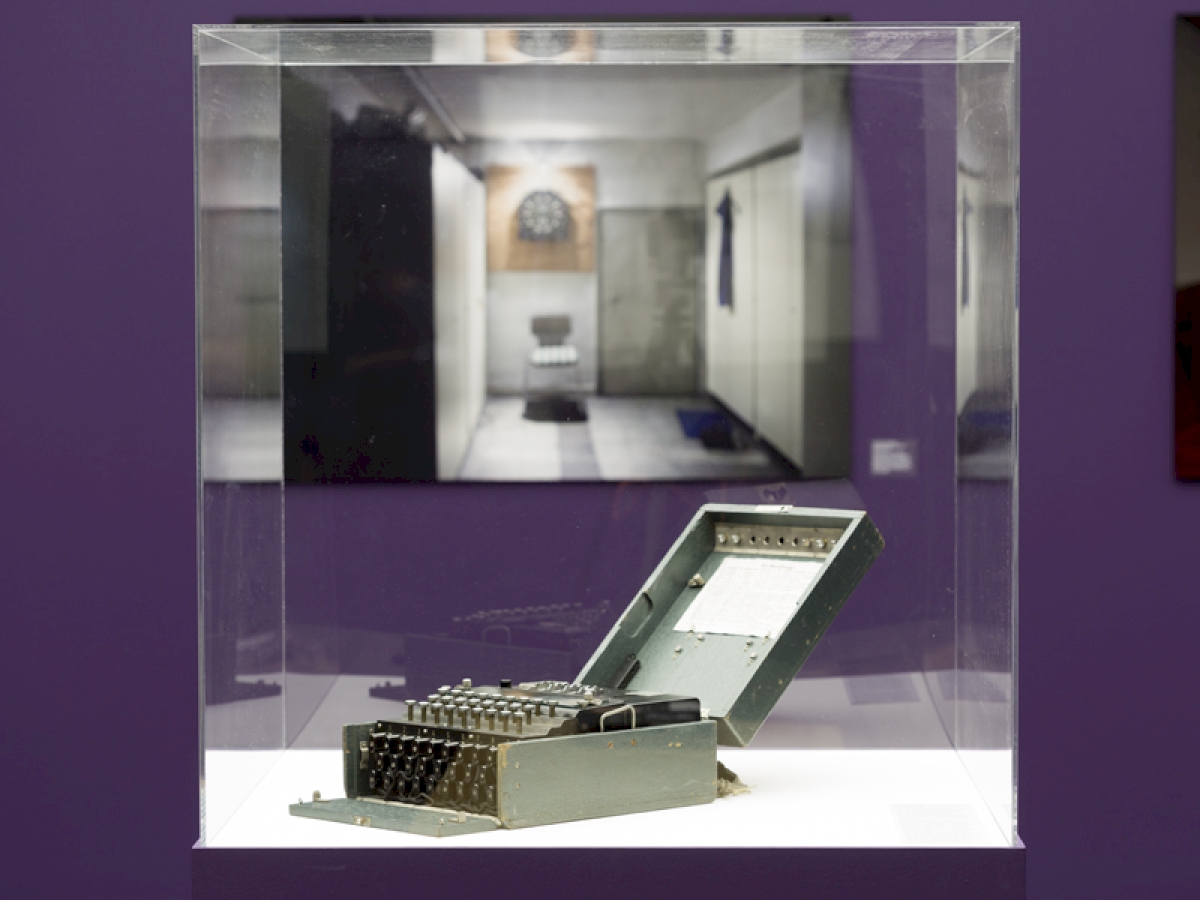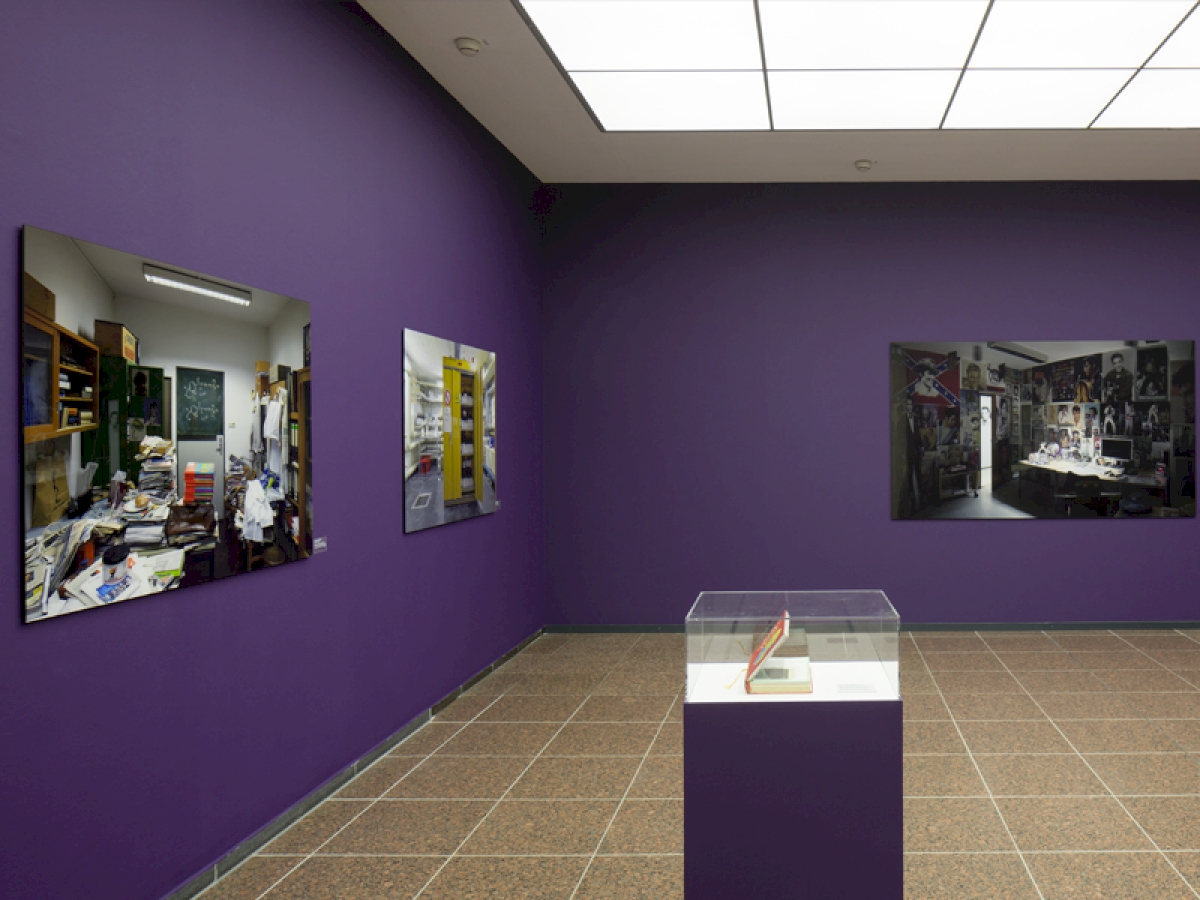THE BND HEADQUARTERS IN PULLACH. A Documentary in Photographs by Martin Schlüter.
As part of its series devoted to documentary photography, the Kunstfoyer presents never-before- seen interior views of the BND site in Pullach. The photos are displayed as highly detailed large-format images. Encompassing an area of 68 hectares, the area was hermetically hidden from public view for decades behind high concrete walls and steel fencing. The checkered history of its utilization extends back to the Nazi period. Occupied by American troops in April 1945, it was home to the secret “Gehlen Organization” established under American control from 1947 on – the forerunner of the Bundesnachrichtendienst founded in 1956. The BND has recently begun to shed part of its cloak of secrecy and initiated an unusual “transparency campaign,” being partly compelled to do so by the public discussion and speculation regarding the mission and methods of the BND and its cooperation with the National Security Agency (NSA). The BND must prove its value as an intelligence agency to the German government and parliament. Above and beyond this, the declared aim is to “expand the foundation of trust in society and to be perceived as a modern service provider firmly anchored in the social system.” Thus does the BND currently perceive itself.
Commissioned by the BND, photographer Martin Schlüter was able to take a surprisingly detailed glimpse behind the walls of the BND headquarters that included workshops, individual offices, and even state-of-the-art IT facilities. His contract specified that he was not to photograph staff members or vehicles. He was escorted by the BND press office. Fact or fiction? Some pictures give rise to doubts: was the “image” that the photographer was allowed or supposed to see perhaps carefully arranged?
The exposition juxtaposes the documentation by an external photographer with the statements of BND President Gerhard Schindler and the Deputy Minister in the German Chancellery and Federal Intelligence Service Coordinator, Klaus-Dieter Fritsche. The opening addresses recorded on 23 June 2014 are available to visitors of the exhibition. Objects dating from the agency’s pre-digital era – such as, for example, an Enigma; an encryption roll for encoding messages; and various means of conveying classified material – enhance this exciting journey through time which this clandestine area has in store. In the wake of the BND’s relocation to Berlin, Pullach will continue to function, albeit on a significantly smaller and modified scale, as a BND field office.
The photo project in Pullach
commissioned by the BND
The Bundesnachrichtendienst (BND) is Germany’s foreign intelligence service. Once the new facility in Berlin is completed, BND headquarters will relocate from Pullach to the capital. The Bundesnachrichtendienst therefore initiated the project in order to photographically document the Pullach site before the move. The aim of the project is to give the public insight into the mission and history of the BND in conjunction with this watershed event. Although Pullach will remain a BND site, it will never again be the same as it is today. Photographer Martin Schlüter enthusiastically took on the project, having come to the attention of the BND press office after being chosen Young Journalist of the Year and CNN’s Journalist of the Year. It is not a stand-alone project but part of a transparency campaign by the BND. Among other things, the aforementioned campaign encompasses dealing with the past in a sovereign manner. The BND’s history project (uhk-bnd.de) is one of Germany’s most comprehensive and most unusual. In dealing with its own history, the BND attaches great importance to the transparent reappraisal of its inception and beginnings as well as the profile of its personnel and activities from 1945 until 1968. With a view to this self-appointed goal, the BND began by forming an internal research and workgroup aptly named “History of the BND” and also appointing a panel of independent external historians. Furthermore, the BND grants journalists and scholars access to inactive files. A reading room was set up expressly in support of their research, which is quite unusual for an intelligence agency. As part of the transparency campaign, the BND also welcomes numerous visitor groups in order to provide an understanding of the manner of its activities, its statutory mandate, and the purpose of its work. The agency’s website, bundesnachrichtendienst.de, also provides information and includes, for the first time, overviews of various work sectors. A further milestone on the road to becoming more public is a planned visitor center in the new BND building in Berlin’s Chausseestraße that will be open to the general public.
Source: Bundesnachrichtendienst, 2014
Biography Martin Schlüter
Born 1977 in Hanover. First photos for the school newspaper while attending grade school. Graduation in 1997. A stint as a photographer with the Hannoversche Allgemeine Zeitung follows. Bicycle tour through Alaska, Canada, and USA in 1998. Begins studying photo design at the Fachhochschule Dortmund in 1999. Semester abroad studying visual communications at the University of Wolverhampton, UK, in 2002. Continues studies at the FH Hannover in 2002, receiving his degree in 2006. Relocates to Hamburg. Works as an assistant to well-known commercial photographers in 2007 and 2008. Freelance photography since 2008, working for editorial offices, advertising agencies, architects, and businesses. Extensive photo story in Alaska concerning sexual molestation of Eskimo children by Catholic priests in 2010. The story appears in MARE magazine in 2011. Named CNN Journalist of the Year in 2012 based on the MARE-story. Commissioned by the Bundesnachrichtendienst to photographically document the Pullach facility in 2012.
Martin Schlüter on the Project:
“The BND headquarters did not match my expectations at all and left me feeling somewhat baffled after my first visit. Then it gradually came to me: The BND headquarters in Pullach stands for the tangible, analog world, a clearly defined enemy stereotype, and the desire to hide. The BND headquartered in Berlin will embody the virtual, digital world of the present, with indefinite enemy stereotypes and a self-confident posture of the agency.”
“While researching this project I realized that there is not much reliable information on the BND that would allow me to reach a final conclusion. Makeshift conspiracy theories here, exaggerated heroic epics there. The truth must lie somewhere in between. For that reason I was well aware that the core of my documentation of the BND headquarters in Pullach would have to represent a challenge to viewers: to look carefully, to remain critical, to maintain an uneasy feeling, but also to question the way one is accustomed to viewing things.”

